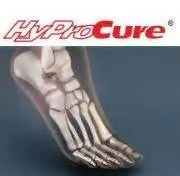For some women, there’s nothing quite as exciting as getting a brand new pair of elegant high heels. High heels come in a number of attractive  styles, including pumps, stilettos, wedges, Mary Janes, platforms and sling backs. But those pretty heels can hide some pretty ugly truths. Take a moment to learn more about the hidden dangers of high heels and how they can cause serious problems for your feet.
styles, including pumps, stilettos, wedges, Mary Janes, platforms and sling backs. But those pretty heels can hide some pretty ugly truths. Take a moment to learn more about the hidden dangers of high heels and how they can cause serious problems for your feet.
Heel Spurs
Heel spurs are bumps that form on the heel bone over time due to continuous friction or pressure. The design of many high heeled shoes puts a strain on the back of the foot, leading to complications with heel spurs and irritation of the skin.
Ankle Injury
Women who wear very high heels also put their ankles at risk of injury. If the wearer falls or has a sudden movement in the wrong direction, it could cause a sprained ankle. The higher the heel, the worse the potential effects of a fall.
Hammertoes
One of the most commonly reported problems that podiatrists receive from women who wear high heels is the appearance of hammertoes. A hammertoe develops as the toes are pinched and squeezed forward in the front of the heel—the toes begin to bend at the joints into an unnatural shape. In some cases, the joints are aggravated to the point where the wearer can no longer bend the toes back up.
Corns and Calluses
Hammertoes are often seen in combination with unsightly corns that develop on the tops of the toes due to friction with the shoe. Calluses also often develop on the sides of the feet and on the bottom, where the ball of the feet meets the ground each time you take a step.
As gorgeous as those high heels on the rack may look, it’s also important to think about how your feet could look after a while if you wear them often. If you enjoy wearing high heels, protect your feet by maintaining regular appointments with your podiatrist. A number of modern solutions and foot therapies are available, so if you have any of the symptoms mentioned above, call your podiatrist today to schedule an urgent consultation.













